Having the proper lighting is essential for your indoor plants to thrive, and using a light meter can help you ensure they receive the right amount of light. Light meters are handy devices that measure the intensity of light coming from natural and artificial sources, allowing you to better understand and adjust the lighting conditions for your plants.
With a light meter, you can quickly determine if your indoor plants are receiving sufficient light, whether it be from a window or a grow light. Equipped with this knowledge, you can optimize the positioning of your plants or adjust your lighting setup to meet their needs, avoiding potential issues associated with over-illumination or insufficient lighting.
To begin using a light meter for your indoor plants, it’s important to first research the specific light requirements of your plants, measured in foot-candles (fc), and then use the meter to measure the light received. Some plants have higher light requirements, while others thrive in lower-light environments. Accurate and consistent use of a light meter will help you maintain the ideal lighting conditions for your plants’ growth and well-being.
Understanding Light Meters
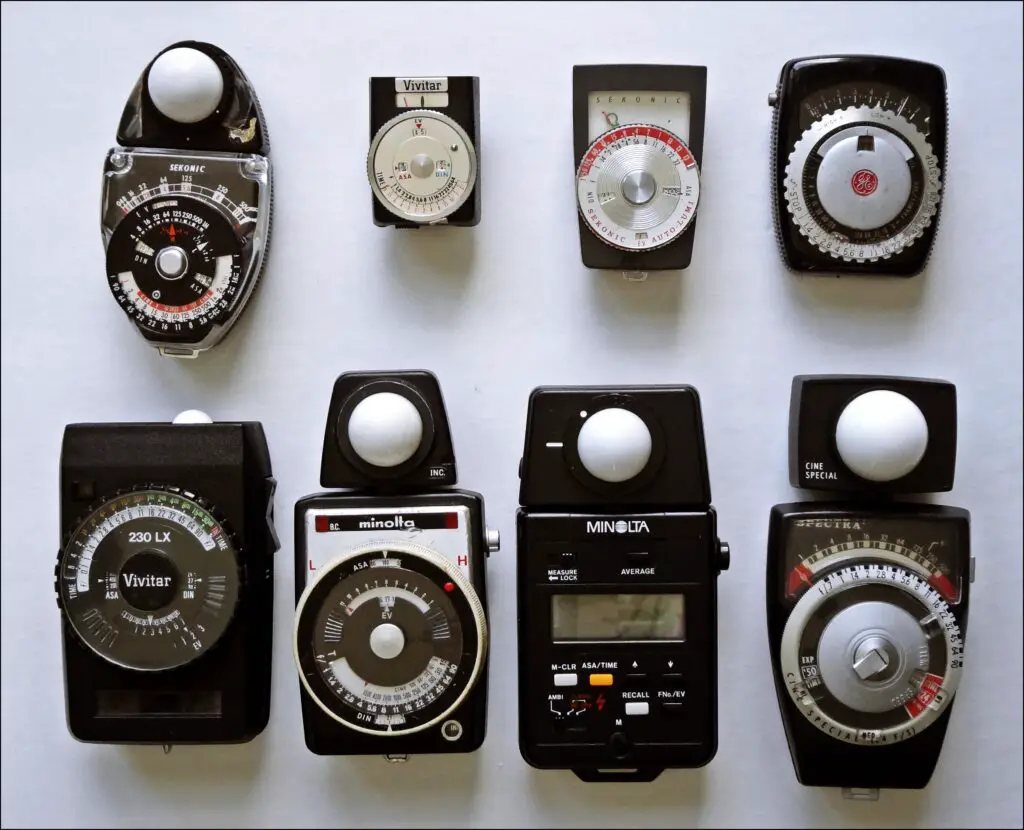
Light meters are essential tools for monitoring indoor plant lighting. As a plant owner, it is important for you to know how to use a light meter effectively to ensure your plants receive precisely what they need to thrive.
Types of Light Meters
There are several types of light meters available, but the two most common are:
- Incident light meters: These measure the light falling on the sensor and can be helpful in determining if your indoor plants are receiving adequate light. These are mostly used in photography but can be adapted for plant light measurement by positioning the sensor close to the plant.
- Reflected light meters: These measure the light reflecting off an object, usually the leaves of the plant. This type of light meter is more commonly used for measuring light levels for houseplants.
When choosing a light meter, consider your specific needs and select a model tailored to indoor plant lighting.
Units of Measurement
Different light meters use different units of measurement to quantify light intensity. The most commonly used units are Lux and foot-candles:
- Lux: A unit of illuminance equal to one lumen per square meter (source). Most light meters display a Lux reading by default.
- Foot-candles: Another unit of illuminance, where one foot-candle is equivalent to one lumen per square foot. You can often switch between Lux and foot-candles on your light meter by pressing a button or selecting the unit in your meter’s settings.
You may find it helpful to use a conversion table or online converter to switch between Lux and foot-candles if needed.
By understanding the different types of light meters available and their units of measurement, you can select the appropriate tool and measure light levels for your indoor plants effectively, ensuring they receive the optimal lighting conditions for growth.
Choosing the Right Light Meter
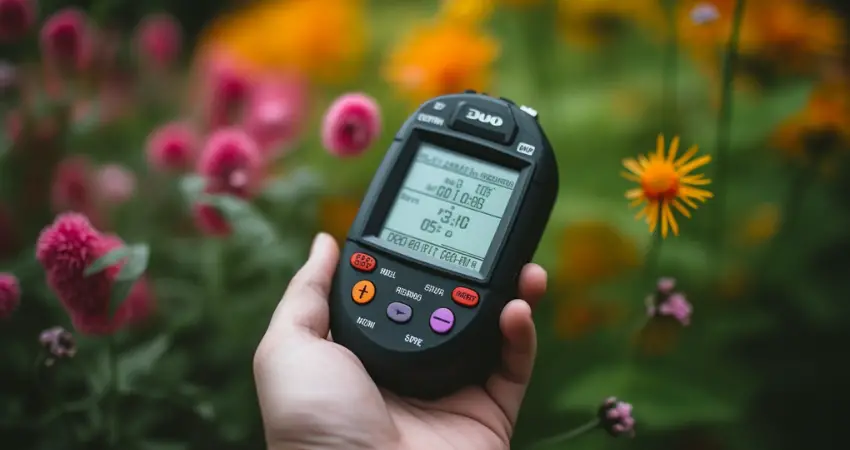
As a gardener, it’s crucial to choose the right light meter that suits your needs and requirements for monitoring your indoor plants’ lighting conditions. In this section, we’ll guide you through some of the key factors you should consider when selecting a light meter.
Price and Quality
When selecting a light meter, it’s essential to balance price and quality. While higher-priced light meters like the Apogee MQ-500 PAR Meter may offer professional-grade performance, it might not be necessary for every indoor gardener. Consider your budget and the features that are most important to you before making a decision.
Resolution and Range
Light meters vary in terms of their resolution and range. Resolution refers to the precision of the readings, whereas range refers to the measurement extent of light intensity. Consider a light meter that offers both a high resolution and an adequate range to suit your indoor plant lighting requirements.
In conclusion, keep these factors in mind when choosing the right light meter for monitoring indoor plant lighting. By evaluating price and quality, as well as resolution and range, you can make an informed decision that best meets your needs.
How to Use a Light Meter
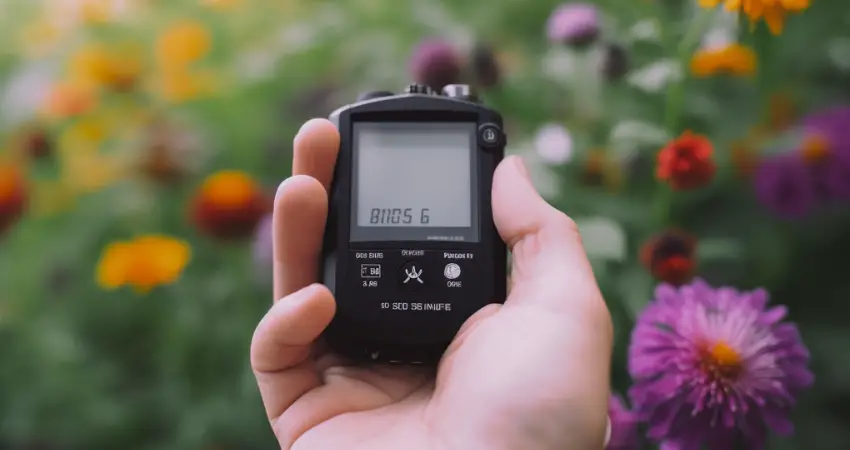
Using a light meter for monitoring indoor plant lighting can help ensure your plants receive the ideal light intensity. In this section, we’ll explain how to set up, calibrate, and measure light intensity with a light meter.
Setting and Calibration
Before using the meter, you’ll need to set it up and calibrate it. This process generally begins with inserting batteries and turning the device on. Next, locate the calibration button, which is usually indicated with a “CAL” label. Press this button to calibrate your meter.
Keep in mind that some meters might require calibration under specific lighting conditions, such as positioning the sensor under natural light or facing it towards a light source provided by the manufacturer. Always refer to your device’s user manual for accurate calibration instructions.
Measuring Light Intensity
Once your meter is calibrated, you’re ready to measure the light intensity around your indoor plants. Start by turning off any sources of artificial light in the room. This will ensure you’re only measuring natural light coming through windows or other openings. Hold the light meter with the sensor facing away from your plant, pointing towards the incoming light source. It’s important to hold the meter as close to the leaves of the plant as possible. This will give you the most accurate reading of the light intensity your plants are receiving.
Take multiple readings at different times of the day to get a clearer understanding of your plants’ overall light exposure. This will help you identify areas where they might need more light, and also determine if there’s an appropriate amount of shading or diffused light present.
By using a light meter to monitor your indoor plant lighting, you can make informed decisions on how to optimize your plants’ growth and overall health.
Optimizing Indoor Plant Lighting

Effective lighting plays a crucial role in the health and growth of your indoor plants. By understanding how to use a light meter and properly arrange your indoor lighting, you can create an environment that supports your plants and keeps them thriving.
Positioning the Light Source
The placement of the light source in relation to your plants is a key factor in their growth. A light meter can help you determine the optimal distance and angle for your light source.
One way to use a light meter for indoor plants is by holding the meter as close to the leaves as possible, with the sensor pointed away from the plant, in the direction of the incoming light. By doing this, you can find out the distance at which your chosen fixture provides the required intensity for your plants.
Creating a Balanced Light Environment
It’s essential to provide your plants with a well-balanced light environment to ensure they receive the appropriate amount of light for their needs. Some plants need more light than others, so it’s important to understand the specific requirements of each plant species in your indoor garden.
For instance, high-light plants typically need a PPF range of 250-450 umol m-2s-1 and would be suitable for brightly lit locations, such as south- or southwest-facing windows (UMN Extension). On the other hand, some plants thrive in bright indirect light, especially those that gain height as they grow, like climbing vines, small trees, and cane-type plants (Bloomscape).
Using a light meter and adjusting the positioning of your light source will help you create a balanced light environment tailored to the specific needs of your plants. This customized approach will maximize the growth and overall health of your indoor garden.
Analyzing Your Light Meter Readings
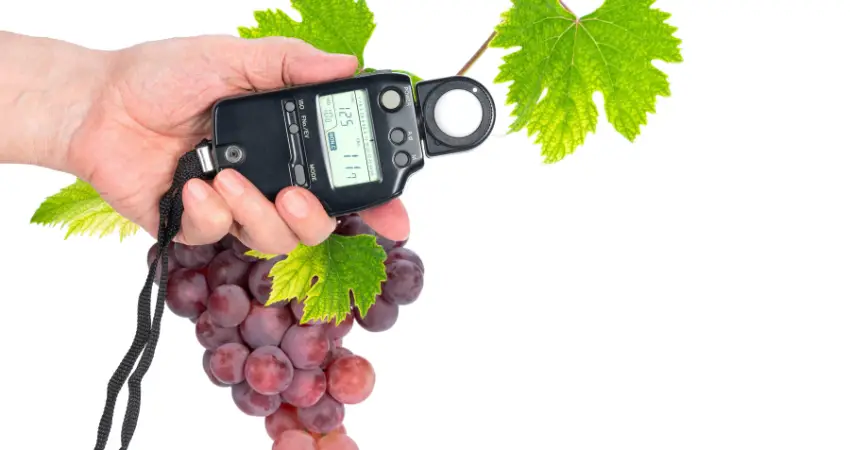
After using your light meter to assess the lighting conditions for your indoor plants, it’s time to analyze the readings to make informed decisions about your plant care. This section will help you understand the data and explain how you can adjust your plant lighting setup accordingly.
Interpreting the Data
The light intensity readings from your meter will be measured in lux or foot-candles. You can begin by comparing these values to the recommended light levels for your specific plant species. Keep in mind that different plants have different light requirements, so it’s crucial to tailor your approach according to your plants’ needs.
If your light meter readings indicate that your plants are not receiving adequate lighting, you may need to adjust your setup. On the other hand, if your readings are too high, it could signify that your plants are exposed to excessive light which can also be detrimental to their health.
Adjustments and Modifications
Based on your light meter readings, you can make various adjustments to improve your indoor plant lighting conditions:
- Change light fixtures: If the light intensity is too low, consider replacing your current lighting fixtures with more powerful ones that can emit a higher intensity of light.
- Move plants closer to the light source: You can also increase the light intensity by positioning your plants closer to the light source. Keep in mind that the distance between the light source and your plants will affect the light intensity they receive.
- Adjust the duration of light exposure: Ensure that your plants receive the optimal amount of light by adjusting the duration of their exposure. Some plants may require more hours of light per day than others to thrive.
- Add reflective materials: To distribute light more evenly and increase light intensity, incorporate reflective materials like aluminum foil or reflective film around your growing area.
By carefully interpreting your light meter readings and making necessary adjustments, you can create the ideal lighting conditions for your indoor plants to thrive.
Maintenance and Tips
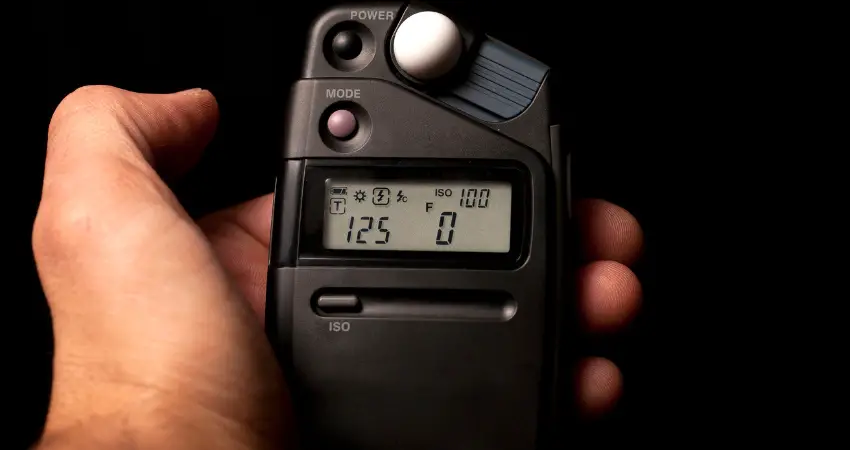
Proper maintenance of your light meter is essential for accurate monitoring of your indoor plant lighting. Follow these tips to keep your device in the best working condition.
Regular Calibration
It’s crucial to calibrate your light meter regularly to ensure accurate measurements. Consult the manufacturer’s instructions for the recommended calibration frequency and follow the process accordingly. Some devices may have a built-in calibration feature, while others may require additional tools or resources. If you’re unsure, consider seeking assistance from an expert or the manufacturer’s customer support.
Battery Life and Replacement
Light meters are often powered by batteries, affecting their performance over time. To ensure your device remains reliable:
- Monitor your battery life and promptly replace them when necessary. Keep spare batteries handy to avoid downtime.
- Use high-quality batteries to minimize the risk of erratic measurements or device malfunctions.
- Turn off the device when not in use to conserve battery life.
- Consider investing in rechargeable batteries for a more sustainable solution.
By following these maintenance tips and ensuring regular calibration and battery replacement, you can maintain reliable indoor plant lighting measurements using your light meter.
Bottom Line
In conclusion, light meters play a crucial role in optimizing the lighting conditions for your indoor plants, ensuring their growth and overall health. By understanding your plants’ specific light requirements and using a light meter to measure the intensity of light they receive, you can make informed decisions on positioning and lighting adjustments. Proper use of a light meter will not only enhance the well-being of your indoor flora but also create a visually appealing and harmonious environment in your home. Take the time to research the light requirements of your plants and invest in a reliable light meter to help your indoor garden flourish.
